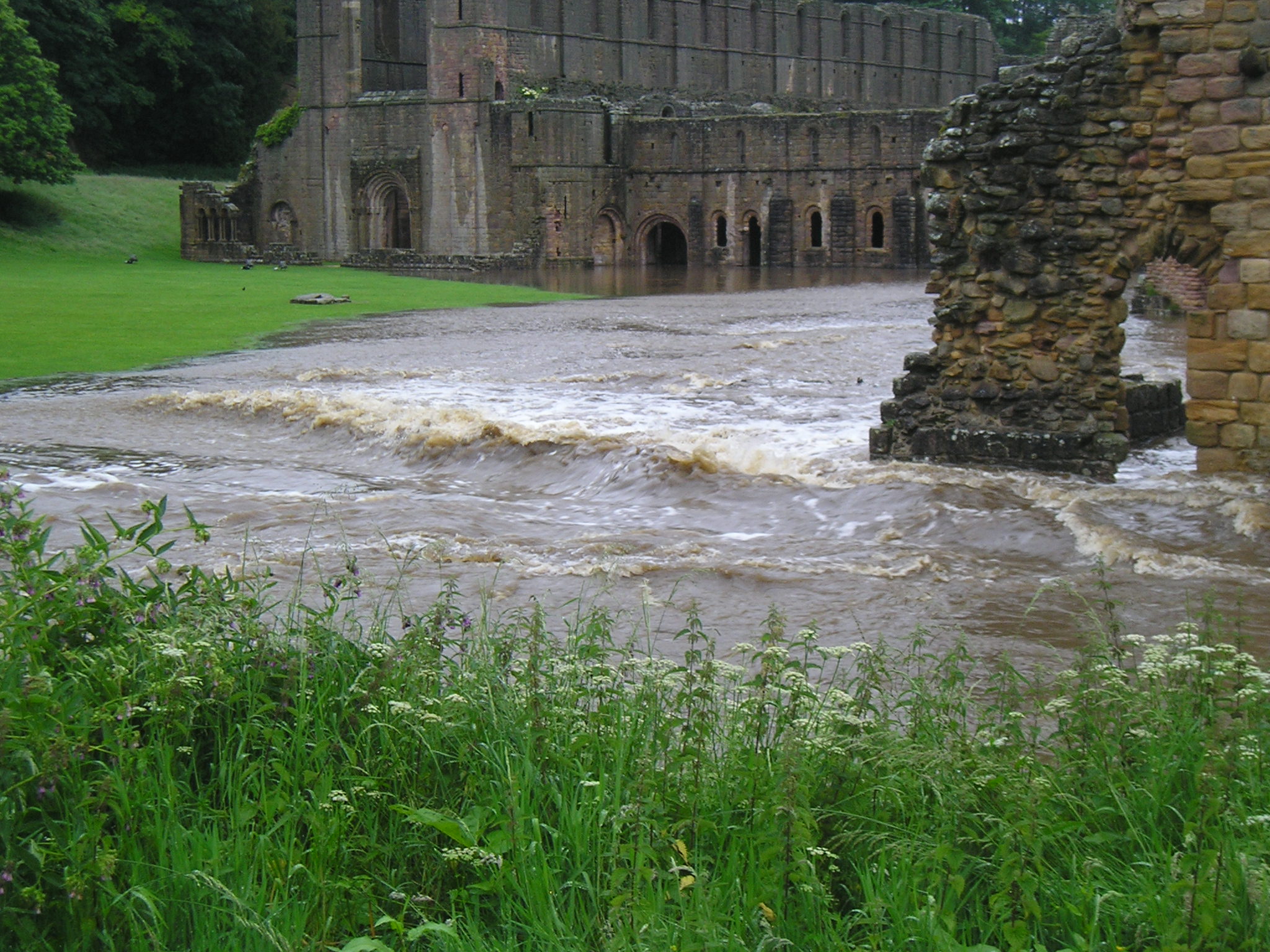Skell Valley Project
Justin Scully, General Manager of Fountains Abbey and Studley Royal, describes this partnership work - which has imporant climate resilience benefits and much more.
What is the background to this project?
The National Trust is a conservation charity and landowner.
In this area, severe flooding events are causing significant damage to ecology and heritage, and the Skell project has enabled us to work in a new way with a range of partners that all care about the river valley. Having a shared vision and commitment to deliver holistic benefits for communities, businesses and nature will enable us to protect the Fountains Abbey World Heritage Site for the long term.
What are you aiming to achieve through this work?
The project seeks to support climate change adaptation at the same time as improving nature, engaging people, and sustaining the local tourism economy.
Why is this project necessary?
The River Skell is an important element of the National Trust owned World Heritage Site at Fountains Abbey and Studley Royal but the river floods regularly. Whilst flood defences were installed downstream in 2012 to protect the City of Ripon, we know that these are not climate change proof.
At Fountains, flooding has caused irreparable damage to the Abbey and the high levels of silt that are deposited in the Studley Royal water garden are threatening their ecology. Silt is also affecting the water features at Grantley Hall, Eavestone Lake and Ripon Canal.
Severe flooding events are becoming a more regular occurrence along the River Skell, so action must be taken now to protect the local community and the cultural landscape. Otherwise, the heritage of the valley could disappear forever.
Throughout the valley there is a decline in nature. Wildlife is threatened by poor water quality due to the high sediment load in the river. Also, non-native invasive species such as Himalayan Balsam and Signal Crayfish have increased. The blanket bog on upper reaches of the Skell is in an ‘unfavourable condition.’ Some ancient and native woodlands are planted up with commercial species. Meanwhile, veteran trees are often unrecorded and vulnerable.
Who are the partners in the Skell Valley Project?
National Trust is a lead partner alongside Nidderdale AONB. There are 15 other partners supporting delivery of the project, including other landowners, farmers, government organisations and the local community.
What is the shared vision of this partnership?
Together, we will restore the River Skell to the heart of a unique and well-connected landscape; where heritage is celebrated, nature thrives, and people are empowered to lead change which ensures the long-term sustainability of the Skell Valley for future generations.
Collaborative working across the catchment from its source in Nidderdale to downstream in Ripon enables multiple benefits to be delivered through a collective vision and understanding, and there is a lot more activity to come.
How is this work funded?
The project was awarded £1.4m in January 2021 from the National Lottery Heritage Fund (NHLF) and this has been supplemented by other fundraising to create a larger project worth £2.5m to run from 2021 to 2024. For example, £230k from European Regional Development Funding (ERDF) has been committed for Natural Flood Management.
How will this partnership work improve resilience to climate impacts and biodiversity?
The project will improve resilience through a range of works to manage flooding upstream of the World Heritage Site. By improving a range of important habitats it will also support resilience of biodiversity.
How will your work help local people?
Farming communities will be supported to develop new business models that fund conservation management. Local businesses will benefit from improved tourism offers and marketing. It will also benefit people through provision of new trails, as well as opportunities to volunteer and enjoy ways to learn about nature and history.
How will this project motivate the wider public to take climate action?
Shared funding allows for practical activity to be supported but also engages the wider public in talking about climate change and what impacts it might have, this could motivate people to take more action in their daily lives to make a difference. Using local examples makes the global issues more relevant and empowers people to act.
Does the project have any financial benefits for the National Trust?
In the long run it should reduce conservation costs associated with managing desilting of the river as it comes through our site.
Have you got any tips for others?
We took a very collaborative approach from the start, seeking to create win-wins. Time to build relationships and use creative techniques to inspire engagement is key but often needs support via funding and partnerships.
Photo credits: National Trust images Chris Lacey (banner header), National Trust images Tom Rafal (below left), National Trust images (below right).







